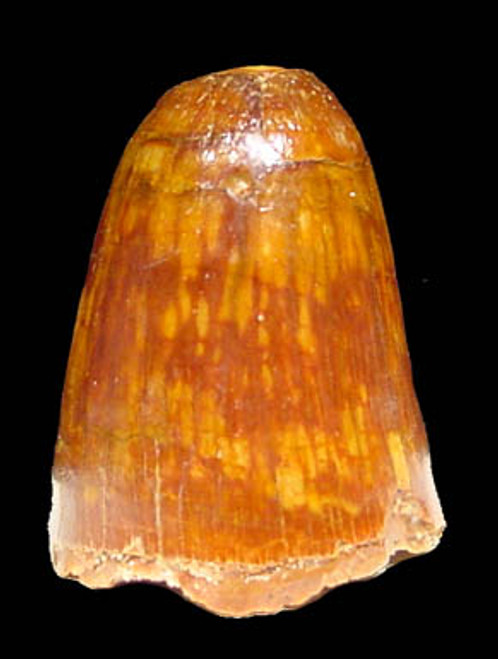Product Description
This is a superb fossil tooth from a very large prehistoric crocodile, found in the Late Cretaceous Kem Kem Beds of North Africa. it is impossible to determine specific species based on a single tooth. Crocodile dentition is so varied in size and type per animal, that making such identification is impossible. To date, four Crocodilian species are present: Elosuchus cherifiensis, a Trematochampsid, Araripesuchus rattoides and Laganosuchus maghrebensis. The enamel shows a natural luster with beautiful color and grain. Prehistoric crocodile teeth are an affordable and collectible predator fossil. They make for a great addition to a well-diversified collection or a perfect way to start a fossil tooth collection.
HISTORY
The Kem Kem Beds (also referred to by various names including the Continental Red Beds and Continental intercalaire) is a geological formation along the border between Morocco and Algeria in southeastern Morocco, whose strata date back to the Late Cretaceous.
Crocodylomorpha is a group of archosaurs that includes the crocodilians and their extinct relatives. During Mesozoic and early Cenozoic times, crocodylomorphs were far more diverse than they are now. Triassic forms were small, lightly built, active terrestrial animals. These were supplanted during the early Jurassic by various aquatic and marine forms. The Later Jurassic, Cretaceous, and Cenozoic saw a wide diversity of terrestrial and semiaquatic lineages. "Modern" crocodilians do not appear until the Late Cretaceous.
Vertebrate fossils are found in three of the formations of the Kem Kem Beds. The Aoufous Formation is a geological deposit that contains some of the vertebrate assemblage of the Kem Kem Beds, of Late Cretaceous date. Two other formations comprise the Kem Kem beds: the Ifezouane Formation (below the Aoufous Formation) and the Akrabou Formation (above the Aoufous).
The Aoufous Formation shows a similar fauna to that one found in the Bahariya Formation of Egypt. In both these formations, Carcharodontosaurus saharicus and Spinosaurus aegyptiacus are found. In addition, several species of crocodilians and fishes are shared. Because fossils from the formation are usually retrieved by local people who are untrained as geologists, it is difficult to know the exact provenance of many of them. For this reason, the provenance of a fossil from the Ifezouane and the Aoufous Formations is not generally specified; in any case the two formations seem to present the same fauna.
The region must have been a swampy floodplain, rich with all forms of life. Numerous species of dinosaurs, shark, fish, turtles, amphibians, crocodiles and on rare occasion, pterosaurs.

image copyright protected
 US DOLLAR
US DOLLAR
 EURO
EURO
 AUSTRALIAN DOLLAR
AUSTRALIAN DOLLAR
 CANADIAN DOLLAR
CANADIAN DOLLAR
 POUND STERLING
POUND STERLING












